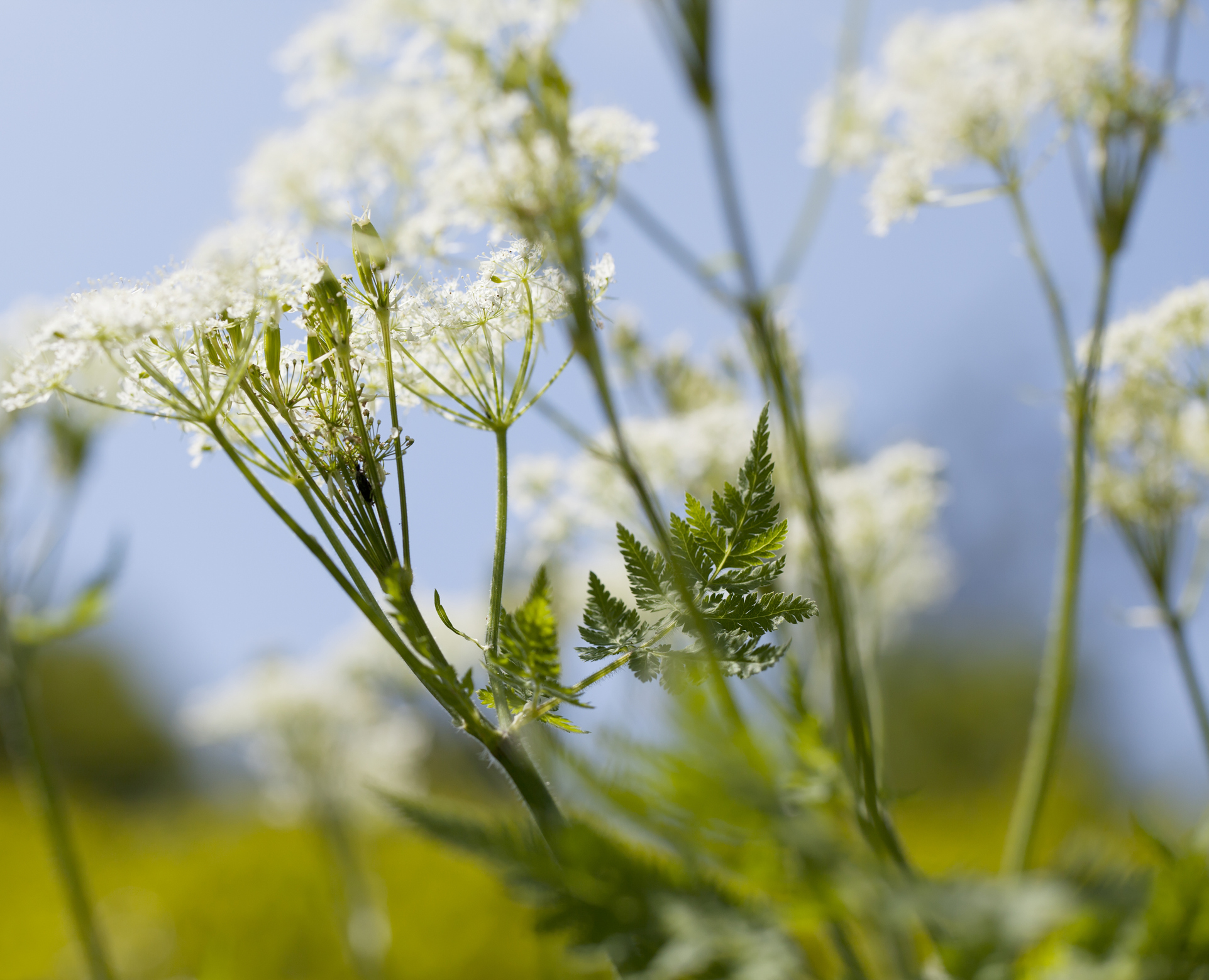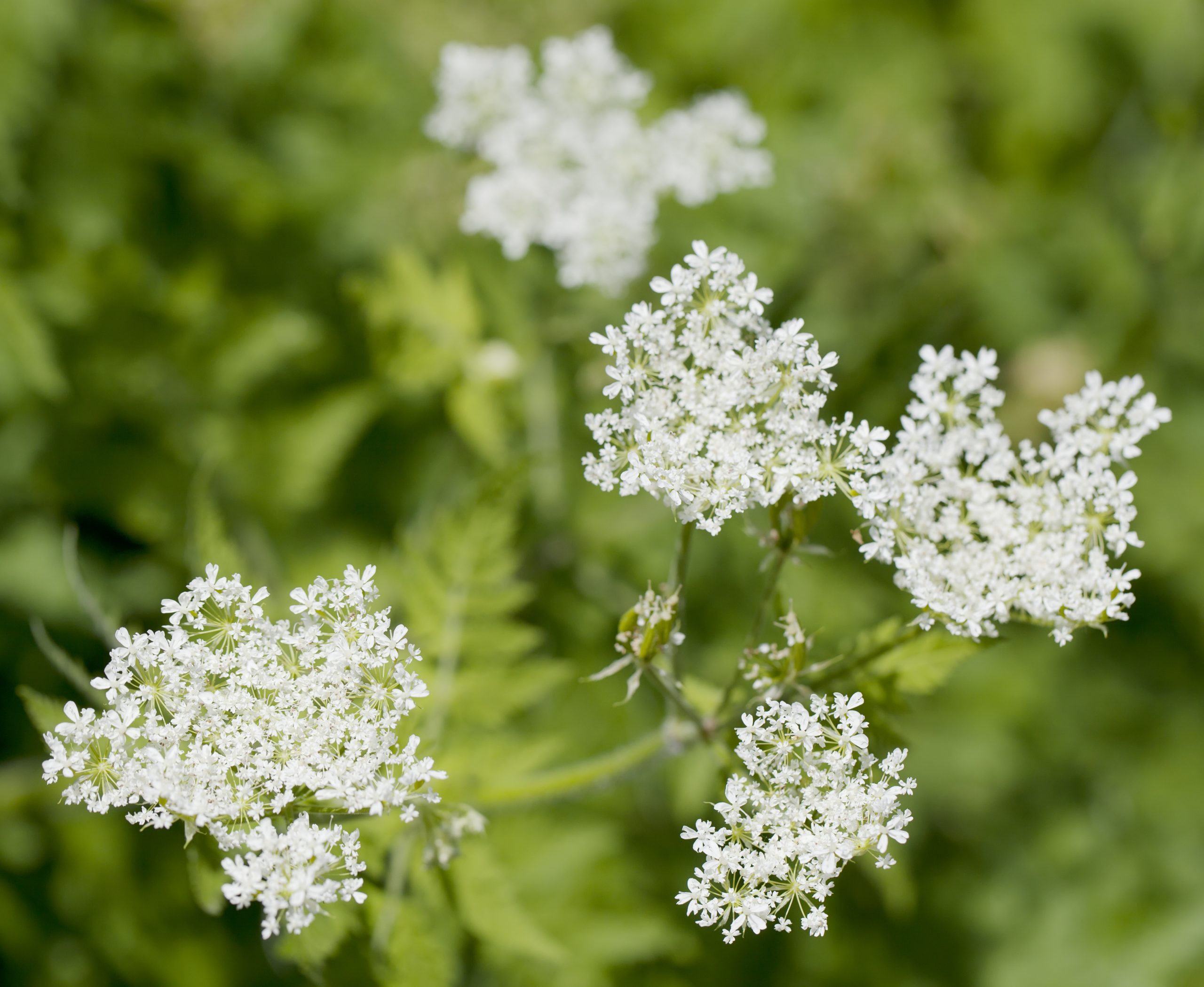Sweet cicely: A delightful plant with a scent that's 'a gorgeous coming together of fennel, liquorice and star anise'
Mark Diacono on how — and why — to grow sweet cicely.


I first grew sweet cicely (Myrrhis odorata) thanks to my father-in-law: one mention that I’d recently read about it had him trowel in hand, lifting multiple self-seeded plants into pots of varying size for me to lighten his burden. I introduced him to the joys of sweet cicely gin a few months later and he’s regretted thinning his supply ever since.
Sweet cicely is not hard to love. It grows to about 3ft tall and has the same poetic lilt when the wind catches it that is shared by so many narrow-stemmed, fern-like umbellifers. Every part of this delightful plant carries a sweet aniseed flavour and fragrance — a gorgeous coming together of fennel, liquorice and star anise — that has made it particularly popular in France, Germany and Scandinavia. Here it has gone from relatively commonly used to rare over the past 100 years: perhaps, between us, we can put that to rights.
The impression of sweetening that comes with sweet cicely has seen it traditionally paired with rhubarb, cooking apples, gooseberries and other sharp fruit, allowing you to use much less (or even no) sugar, but still have a pleasing sense of sweetness to balance the sour. It works equally well with vegetables, too: try the leaves (chopped and added late) and seeds (chopped or whole, in with the cooking) with root vegetables, greens and even potatoes.
When added to cream, the seeds and leaves ease any sense of cloying; they lift an omelette and, as my father-in-law now knows only too well, its traditional use as an ingredient in aquavit is replicated nicely in a gin or vodka infusion using seeds or leaves. Chewing a green seed takes me right back to the liquorice comfits of my school years and, if aniseed is not so much to your taste, when cast into a stir-fry or poached with rhubarb they somehow confer a sweetness without very much of that aniseed presence.
Sweet cicely is a great flavour enhancer, too: its ability to complement and intensify other flavours makes it perfect when paired with woody herbs, such as bay, as well as the softer herbs. As the English botanist John Parkinson wrote 400 years ago, ‘it gives a better taste to any other herb put with it’. Amen.

It is as pleasing in the garden as the kitchen. Very tolerant of cold, sweet cicely grows well in most soils, but particularly thrives in a moist soil in a partially shady position, where not so much else edible might find a happy home. It is an outstanding understorey plant: I grow it beneath trees, shrubs and in that otherwise tricky, shady part of the garden.
Although sweet cicely retracts to varying degrees through the colder months, it emerges lively and early as the days lengthen, its incised, fern-like leaves growing almost visibly. Small white flowers follow quickly, emphasising sweet cicely’s similarity to cow parsley. As if in a hurry to demonstrate its lifecycle, seeds appear: tiny at first, these ridged batons expand to perhaps a quarter of an inch long in a succession of yet more flowers and seeds.
Exquisite houses, the beauty of Nature, and how to get the most from your life, straight to your inbox.
As my father-in-law will tell you, sweet cicely self-seeds readily, especially in lighter soils. I love this — it’s free plants, edible ground cover, pollinator hotels and more — but, if you share his initial sensibility, pinch off the seed before it darkens and drops. If you are too late, you can lift and pot any stray seedlings to give away.
As far as I’m aware, there are no named varieties of sweet cicely, but take care not to confuse it with Osmorhiza longistylis, which shares its common name in North America.
Unless you are fortunate enough to live in the same postcode as my father-in-law, it is easiest to start sweet cicely from a young plant. You can sow seed, but beware of its short window of viability and the need for winter cold for germination. If you want to try collecting your own seeds, sow them in late summer, before they turn dark. Hold your nerve as growth won’t appear until spring. You can even propagate from the tap root, much as you might with comfrey: lift the root and cut into sections with each carrying at least one eye and push each an inch into a small pot filled with compost. Plant out in spring when at least 2in tall.
Mark Diacono grows edibles, both usual and unusual, at Otter Farm in Devon. His book Spice: A Cook’s Companion, published by Quadrille (£25), is out now.
Mark is lucky enough to spend most of his time eating, growing, writing and talking about food. He has written fourteen award-winning books, including A Year at Otter Farm and A Taste of the Unexpected (both won Food Book of the Year, and Garden Book of the Year). Known for growing everything from Szechuan pepper to pecans to Asian pears, Mark's refreshing approach to growing and eating has done much to inspire a new generation to grow some of what they eat. He was involved in the early days of River Cottage, appearing in the TV series, and writing four River Cottage books. Mark writes to a global audience on his best-selling Substack: Mark Diacono’s Abundance.
